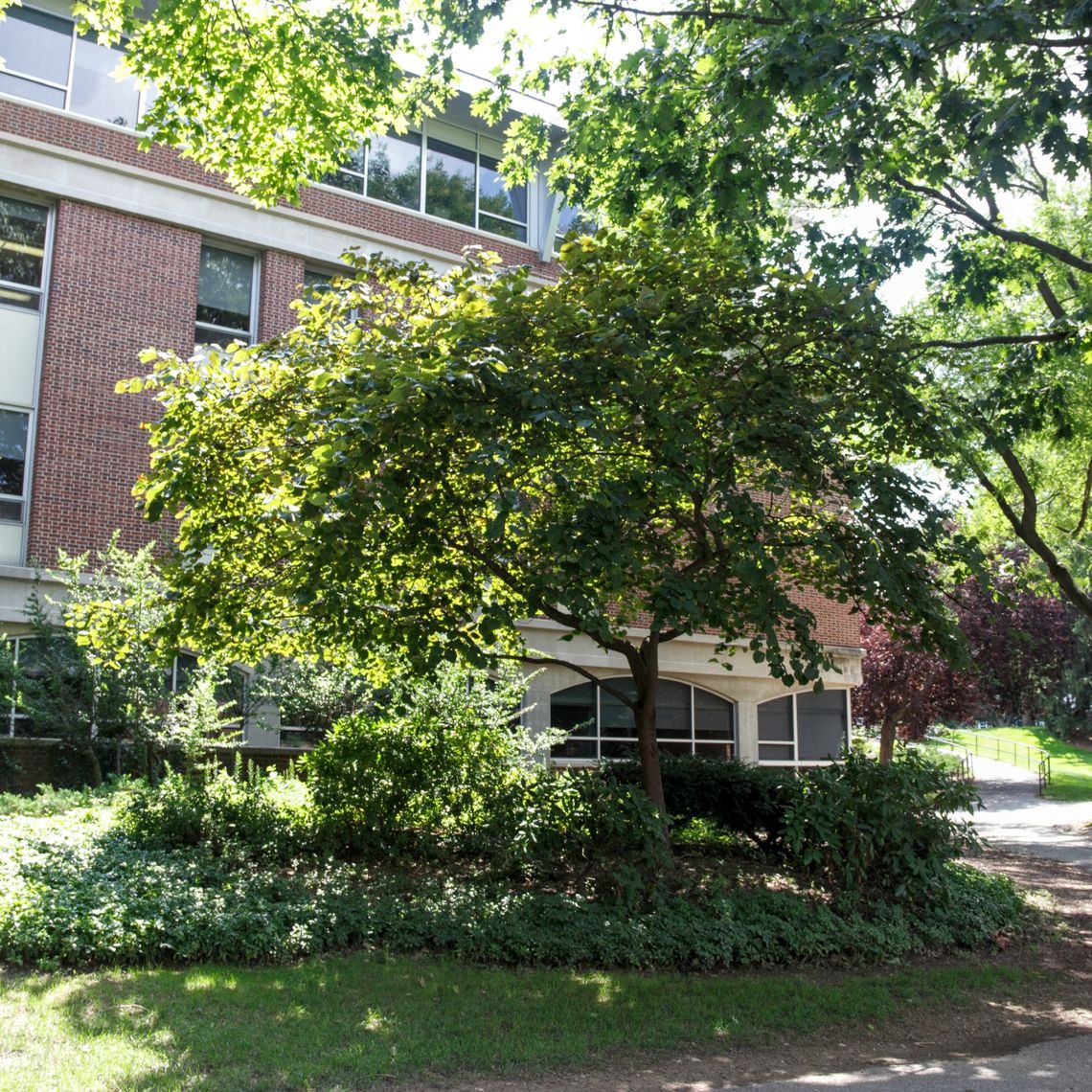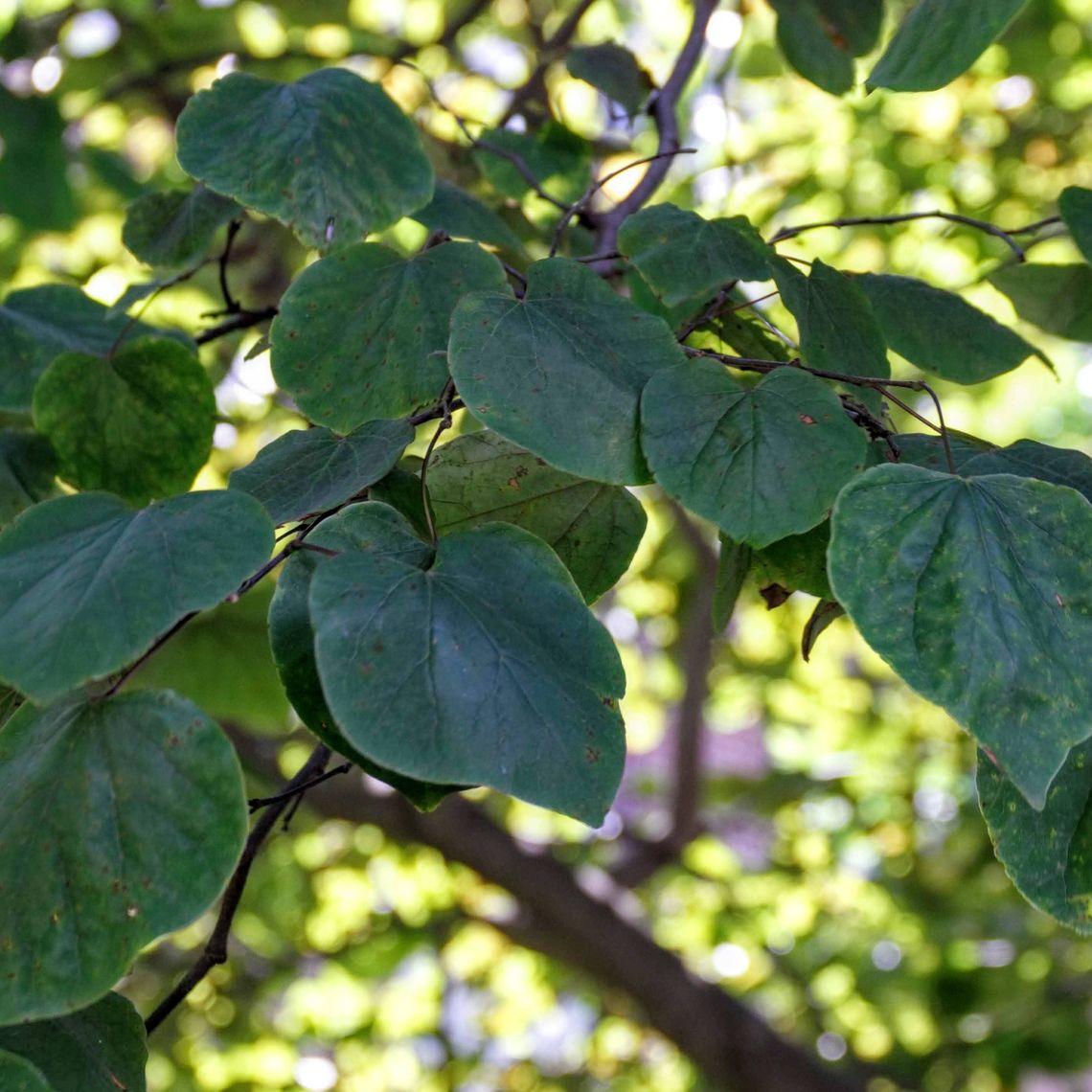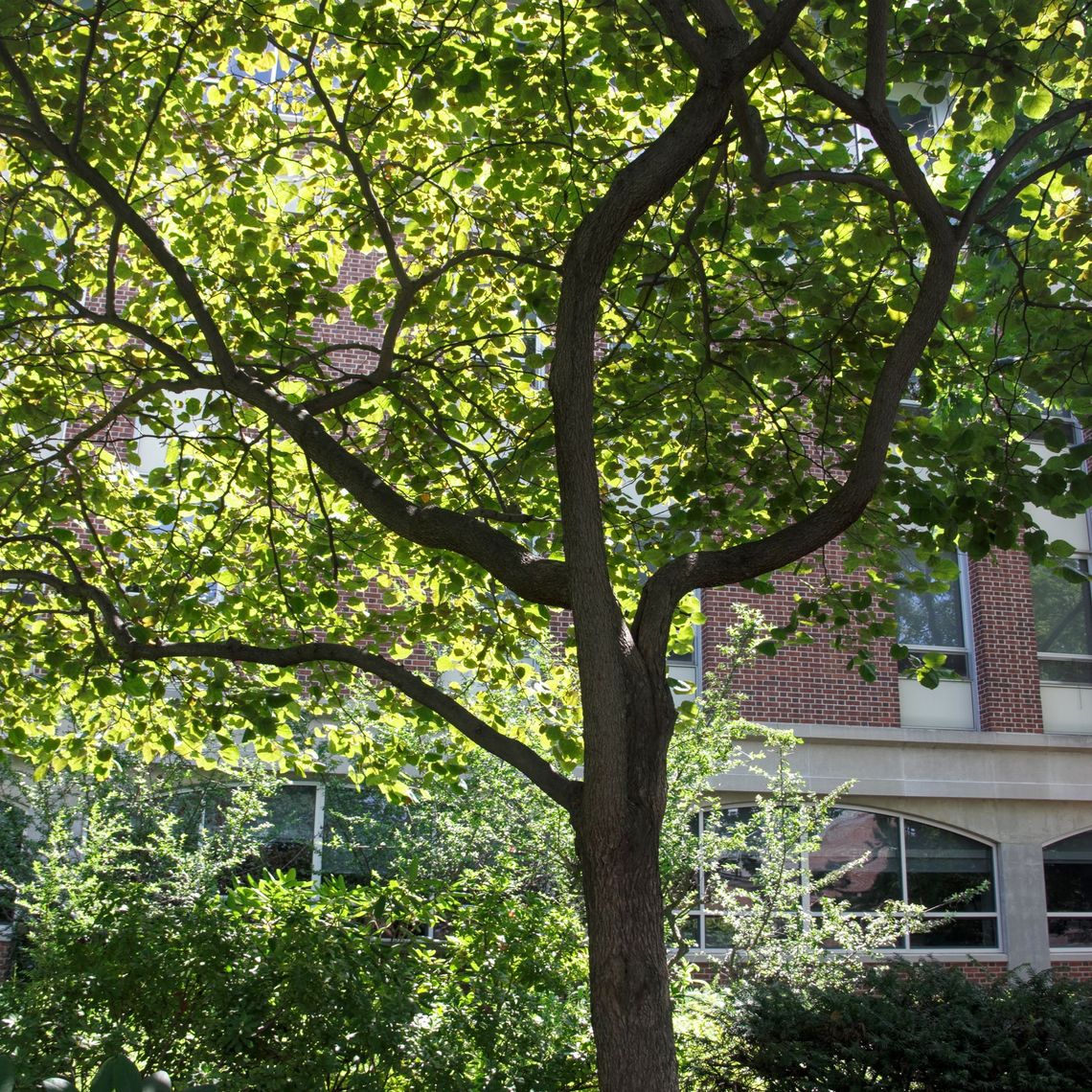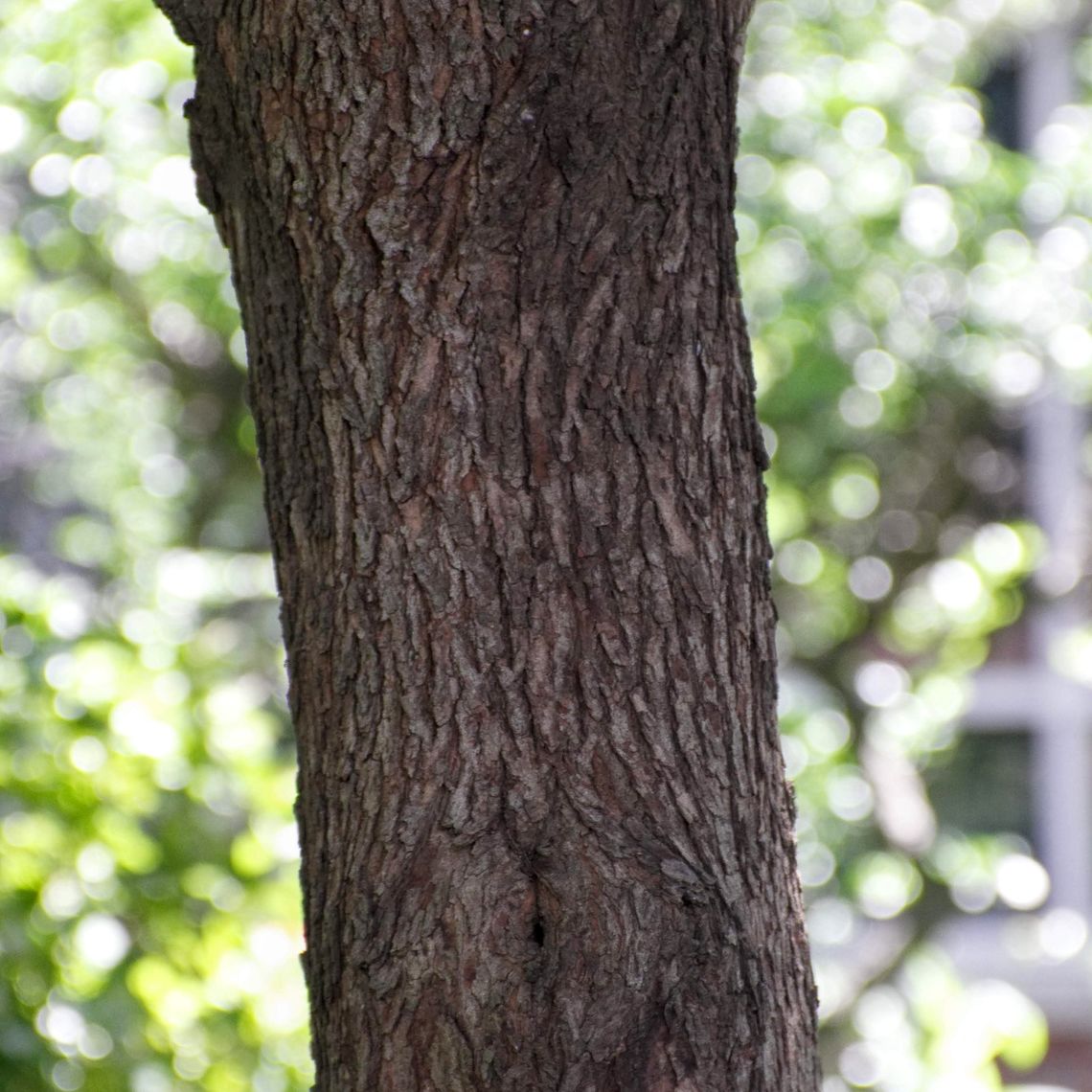Eastern Redbud (Cercis canadensis)
In April to May, before leaves appear, pea-like rose-purple flowers cover the tree. When leaves do begin to emerge, they are waxy and of a bronze-purple color. Once matured, the leaves become distinctly heart-shaped and turn to a blue-green color. In the fall, leaves change color again and turn bright yellow. The tree's bark is dark and may even appear black. This tree attracts butterflies.
Family: Fabaceae (Pea)
Characteristics: Before leaves emerge, magenta buds cover this tree. These buds unfold into rosy pink flowers, that bloom in clusters of 4-10. When leaves begin to emerge, they are waxy and of a bronze to red-purple color. Once matured, leaves turn blue-green and are 3-5 inches long with a distinct heart shape. In the fall, these leaves turn yellow. Bark is dark and can appear black when wet. The bark also exfoliates, revealing the rust colored inner bark. This is a low-branching, spreading tree with a flat-topped or rounded crown. It is often multi-trunked. This tree grows 20-30 feet high and 25-35 feet wide.
Foliage: Deciduous (leaves lost seasonally)
Geographic Origin: North and Central America (native)
Cultivation Notes: Requires low maintenance. Does best in full sun to part shade. Prefers moist and well drained soil. Wet or poorly drained soils should be avoided. This tree may be difficult to transplant.
Number on Campus: 6
Sources: Dirr, Morton Arboretum, Missouri Botanical Garden




